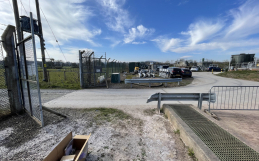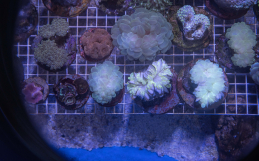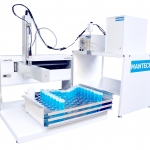Permanganate Index and Oxidizability for Source and Treated Drinking Waters
What is permanganate index?
The permanganate index is an assessment of water quality typically used for freshwater and treated drinking waters. It involves the determination of oxidizability, also known as oxygen (O2) demand, by potassium permanganate (ISO method 8467). This is the method prescribed in the European Union (EU) Council Drinking Water Directive 98/83/EC. The directive relates to the quality of water intended for human consumption, ensuring it is safe and clean. To achieve this, the recommended measurement of oxidizability has a 5mg/L O2 limit.
The ISO method involves heating the sample in a boiling water bath with a known amount of potassium permanganate and concentrated sulphuric acid for a fixed time (10 minutes). Part of the permanganate will be reduced by oxidizable material in the sample. The consumed permanganate can be determined by adding an excess of oxalate solution, followed by titration with permanganate. This method applies to waters which have a chloride ion concentration of less than 300 mg/L, as it is removed by mercuric salts. Samples having a permanganate index over 10 mg/L should be diluted before analysis. The lower limit of the optimum range of the test is 0.5 mg/L, however this has been difficult to obtain in regular practice. The total time of analysis is 30-45 minutes per sample. The permanganate method is not recommended for waste water as some organic compounds are not oxidized (incompletely oxidized).
Why is permanganate index measured?
The method detection limit (MDL) for the EU Drinking Water Directive is lower than the MDL for O2 demand by the potassium dichromate method. In addition, potassium dichromate is subject to a ban in the EU, as it is a known carcinogen, mutagen and reproductive toxin. Therefore, the permanganate method was selected for the Drinking Water Directive for measure O2 demand (oxidizability). The permanganate method can also be used for source water monitoring to determine the reduction of contaminants required to meet the regulatory limit.
Due to the complexity of the permanganate method, some countries have allowed the Total Organic Carbon (TOC) method to be used as an alternative. TOC values generally measure lower than permanganate, however they do not measure the reactivity (or oxidizability) of the carbon. In 2017, a TOC manufacturer published the following statement in their brochure: “TOC on its own sheds no light on the oxidizability of the measured carbon or the amount of oxygen needed for its biodegradation”. By not measuring the correct parameter, public health and treatment optimization can be negatively affected. Health Canada realizes the benefits of the reactivity or oxidizability parameter for the protection of public health, however, the ministry required a new method to support it.
A new method to measure oxidizability
The photoelectrochemical oxygen demand (PeCOD) method measures the oxidizability of Natural Organic Matter (NOM) present in source and treated drinking waters. It follows the newly released ASTM International Method D8084 and offers a simple replacement for the permanganate index method. The PeCOD method is fast, safe, and green, allowing operators to analyze samples anywhere. This eliminates the waiting period for a laboratory to receive and analyze samples.
Health Canada is applying a 5 mg/L limit for chemical oxygen demand (COD), via the PeCOD method, in the soon to be released “Natural Organic Matter in Drinking Water” guidance document. A recent presentation which highlights COD as a parameter for measuring NOM can be viewed here. The PeCOD method takes less than 5 minutes for sample preparation and analysis. It is simple to learn and operate, allowing it to be placed directly in the plant operator’s hands. The PeCOD technology is available in benchtop, automated, and online configurations. It is the next evolution of event detection in source water monitoring, optimized coagulation, disinfection by-product formation potential (DBPfp), and regulatory compliance. Water treatment operators can now have this tool in their own hands, giving them the ability to obtain quick, reliable results anytime.







